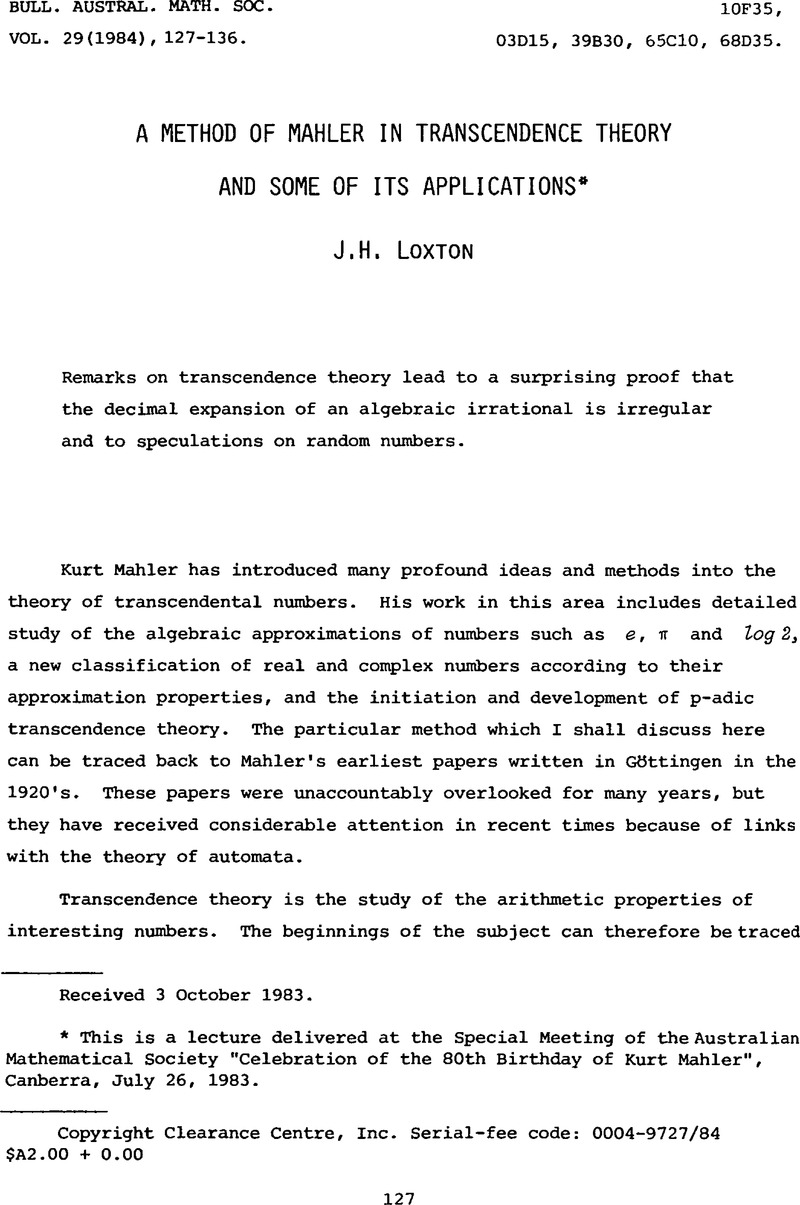Crossref Citations
This article has been cited by the following publications. This list is generated based on data provided by Crossref.
Bailey, David H.
Borwein, Jonathan M.
Crandall, Richard E.
and
Pomerance, Carl
2009.
On the binary expansions of algebraic numbers.
Journal de théorie des nombres de Bordeaux,
Vol. 16,
Issue. 3,
p.
487.
Coons, Michael
and
Spiegelhofer, Lukas
2018.
Sequences, Groups, and Number Theory.
p.
37.
Poulet, Marina
2023.
A Density Theorem for the Difference Galois Groups of Regular Singular Mahler Equations.
International Mathematics Research Notices,
Vol. 2023,
Issue. 1,
p.
536.


